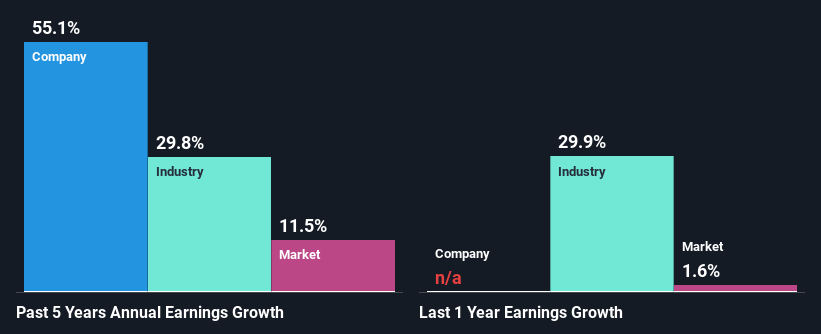Is Good Energy Group PLC's (LON:GOOD) Recent Stock Performance Tethered To Its Strong Fundamentals?
Most readers would already be aware that Good Energy Group's (LON:GOOD) stock increased significantly by 50% over the past three months. Given the company's impressive performance, we decided to study its financial indicators more closely as a company's financial health over the long-term usually dictates market outcomes. Specifically, we decided to study Good Energy Group's ROE in this article.
Return on equity or ROE is an important factor to be considered by a shareholder because it tells them how effectively their capital is being reinvested. In simpler terms, it measures the profitability of a company in relation to shareholder's equity.
See our latest analysis for Good Energy Group
How Is ROE Calculated?
Return on equity can be calculated by using the formula:
Return on Equity = Net Profit (from continuing operations) ÷ Shareholders' Equity
So, based on the above formula, the ROE for Good Energy Group is:
40% = UK£20m ÷ UK£51m (Based on the trailing twelve months to June 2023).
The 'return' is the income the business earned over the last year. So, this means that for every £1 of its shareholder's investments, the company generates a profit of £0.40.
Why Is ROE Important For Earnings Growth?
So far, we've learned that ROE is a measure of a company's profitability. Depending on how much of these profits the company reinvests or "retains", and how effectively it does so, we are then able to assess a company’s earnings growth potential. Generally speaking, other things being equal, firms with a high return on equity and profit retention, have a higher growth rate than firms that don’t share these attributes.
A Side By Side comparison of Good Energy Group's Earnings Growth And 40% ROE
Firstly, we acknowledge that Good Energy Group has a significantly high ROE. Additionally, the company's ROE is higher compared to the industry average of 9.3% which is quite remarkable. So, the substantial 55% net income growth seen by Good Energy Group over the past five years isn't overly surprising.
As a next step, we compared Good Energy Group's net income growth with the industry, and pleasingly, we found that the growth seen by the company is higher than the average industry growth of 30%.
Earnings growth is an important metric to consider when valuing a stock. What investors need to determine next is if the expected earnings growth, or the lack of it, is already built into the share price. Doing so will help them establish if the stock's future looks promising or ominous. Is Good Energy Group fairly valued compared to other companies? These 3 valuation measures might help you decide.
Is Good Energy Group Efficiently Re-investing Its Profits?
Good Energy Group's three-year median payout ratio to shareholders is 2.7%, which is quite low. This implies that the company is retaining 97% of its profits. This suggests that the management is reinvesting most of the profits to grow the business as evidenced by the growth seen by the company.
Besides, Good Energy Group has been paying dividends for at least ten years or more. This shows that the company is committed to sharing profits with its shareholders. Our latest analyst data shows that the future payout ratio of the company is expected to rise to 7.8% over the next three years. Therefore, the expected rise in the payout ratio explains why the company's ROE is expected to decline to 18% over the same period.
Conclusion
On the whole, we feel that Good Energy Group's performance has been quite good. Specifically, we like that the company is reinvesting a huge chunk of its profits at a high rate of return. This of course has caused the company to see substantial growth in its earnings. That being so, a study of the latest analyst forecasts show that the company is expected to see a slowdown in its future earnings growth. To know more about the company's future earnings growth forecasts take a look at this free report on analyst forecasts for the company to find out more.
Have feedback on this article? Concerned about the content? Get in touch with us directly. Alternatively, email editorial-team (at) simplywallst.com.
This article by Simply Wall St is general in nature. We provide commentary based on historical data and analyst forecasts only using an unbiased methodology and our articles are not intended to be financial advice. It does not constitute a recommendation to buy or sell any stock, and does not take account of your objectives, or your financial situation. We aim to bring you long-term focused analysis driven by fundamental data. Note that our analysis may not factor in the latest price-sensitive company announcements or qualitative material. Simply Wall St has no position in any stocks mentioned.

 Yahoo Finance
Yahoo Finance 
